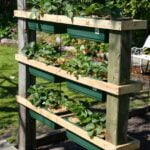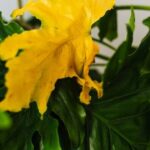Creating a vibrant and inviting landscape that attracts hummingbirds can add a touch of natural beauty and excitement to any outdoor space. Whether you have a large garden or a small patio, incorporating hummingbird-friendly elements into your landscaping can bring these fascinating birds right to your doorstep. From choosing the right plants to maintaining a year-round habitat, there are several key considerations when it comes to creating a hummingbird-friendly landscape.
When it comes to attracting hummingbirds, selecting the right plants is crucial. By incorporating colorful flowers, shrubs, and trees that provide nectar and shelter, you can create an environment that is perfect for these tiny birds. Not only does this add visual appeal to your garden, but it also ensures that hummingbirds have the resources they need to thrive.
In addition to plant selection, designing a landscape that provides food sources, shelter, and nesting spots is essential in creating an ideal habitat for hummingbirds. By carefully planning your garden layout and including water sources, you can create an environment that is both visually stunning and hospitable to these unique creatures.
Let’s explore the various aspects of creating a hummingbird-friendly landscape and how you can design a space that not only looks beautiful but also supports these fascinating birds.
Choosing the Right Plants for HumMINGbirds
When creating a hummingbird-friendly landscape, one of the most important aspects is selecting the right plants to attract these delightful creatures. Here are some tips for choosing the right flowers, shrubs, and trees to create a diverse and colorful garden that will appeal to hummingbirds.
- Bee balm (Monarda)
- Trumpet vine (Campsis radicans)
- Penstemon
- Salvia
- Cardinal flower (Lobelia)
- Columbine (Aquilegia)
When choosing plants for your hummingbird garden, consider selecting a variety of flowering plants that bloom at different times throughout the year. This will ensure a consistent food source for hummingbirds and provide them with nectar-rich flowers to visit. Additionally, opt for plants with tubular-shaped flowers as these are particularly attractive to hummingbirds.
Tips for creating a diverse and colorful garden:
- Incorporate a mix of annuals, perennials, shrubs, and trees to provide varied sources of nectar and habitat for hummingbirds.
- Choose plants with a range of vibrant colors such as reds, oranges, pinks, and purples as these hues are known to catch the eye of hummingbirds.
- Research native plant species in your region that are known to attract hummingbirds in order to ensure success in your garden.
By carefully selecting the right plants for your landscape, you can create an inviting environment that will not only enhance the beauty of your garden but also provide sustenance and shelter for these charming birds throughout the year. With these tips in mind, you can turn your yard into an irresistible haven for hummingbirds.
Creating a HumMINGbird-Friendly Habitat
Providing Food Sources for Hummingbirds
One of the most important aspects of creating a hummingbird-friendly habitat is providing ample food sources for these tiny, vibrant birds. When choosing plants for your garden, opt for nectar-producing flowers such as trumpet vine, bee balm, and salvia. These flowers provide the high-energy nectar that hummingbirds need to fuel their rapid metabolism. Additionally, consider incorporating flowering trees and shrubs such as red buckeye or lantana to diversify the sources of nectar in your landscape.
Designing a Landscape That Provides Shelter and Nesting Spots
In addition to offering an abundance of nectar-rich blooms, it’s crucial to design your landscape in a way that offers shelter and nesting spots for hummingbirds. Dense shrubbery, trellises, and even small trees can provide natural cover and nesting opportunities for these tiny birds. Including a variety of plant heights and structures will offer hummers plenty of options when it comes to finding safe places to rest and raise their young.
Tips for Creating a Water Source for Hummingbirds
Water features are another key element in designing a hummingbird-friendly habitat. Consider adding a small fountain or birdbath to your garden that provides clean, shallow water for hummingbirds to drink and bathe in. Be sure to keep the water fresh and clean to ensure the health of visiting birds. In warmer climates, you may also want to incorporate a misting system or shallow pool to offer additional ways for hummingbirds to stay hydrated and cool.
By incorporating these elements into your landscape design, you can create an inviting habitat that will attract hummingbirds throughout the year while ensuring they have the resources they need to thrive in your garden. These tips will not only help attract vibrant visitors but also contribute to creating a beautiful outdoor space for everyone to enjoy.
Designing a Colorful HumMINGbird Garden
A colorful hummingbird garden can transform any outdoor space into a vibrant and inviting sanctuary for these fascinating birds. Incorporating a wide variety of flowering plants is essential to attracting and sustaining hummingbirds in your landscape. The key to designing a successful hummingbird garden lies in selecting the right combination of plants that provide nectar, shelter, and nesting sites for these tiny creatures.
When choosing plants for your hummingbird garden, it’s important to select a diverse range of flowers that bloom at different times throughout the year. This ensures that there are always food sources available for the hummingbirds. Some popular choices include trumpet-shaped flowers like penstemon and bee balm, as well as tubular blooms such as salvia and columbine. Additionally, incorporating native plants into your landscape will help attract local hummingbird species.
In addition to nectar-rich flowers, consider adding shrubs and trees that provide cover and nesting opportunities for hummingbirds. Dense vegetation offers protection from predators and harsh weather conditions, making it an essential component of a successful hummingbird habitat. By integrating a mix of colorful flowers, foliage, and structural elements into your garden design, you can create an aesthetically pleasing environment that also provides crucial resources for hummingbirds.
| Plants | Description |
|---|---|
| Penstemon | Produces trumpet-shaped blooms that are rich in nectar. |
| Bee Balm | Known for its bright red or pink tubular flowers that attract hummingbirds. |
| Salvia | Offers tubular blossoms in various hues, including red, purple, and blue. |
Maintaining a HumMINGbird Landscape
Once you have designed and created your hummingbird-friendly garden, it’s important to maintain it properly in order to ensure a healthy habitat for these wonderful creatures. Here are some tips for ongoing maintenance:
1. Regular Pruning: Keep your hummingbird-friendly plants in good shape by pruning them regularly. This will not only promote healthy growth but also keep the landscape looking neat and tidy. Be sure to remove any dead or diseased branches to prevent the spread of diseases.
2. Proper Fertilizing: To keep your plants healthy and attractive to hummingbirds, it’s important to fertilize them appropriately. Use a balanced fertilizer and follow the instructions on the label for the best results. Avoid over-fertilizing, as this can harm both the plants and the hummingbirds that rely on them.
3. Pest and Disease Management: Keep an eye out for pests and diseases that could affect your hummingbird garden. Be sure to address any issues promptly using environmentally friendly pest control methods to avoid harming the hummingbirds or other beneficial creatures in your garden.
Incorporating these maintenance practices will help ensure that your hummingbird landscape remains vibrant, healthy, and inviting for these delightful birds year after year.
Remember, maintaining a thriving hummingbird landscape requires ongoing care and attention, but the rewards of watching these beautiful creatures visit your garden make it all worthwhile.
Adding Feeders and Nectar Stations
In addition to planting a variety of flowers, shrubs, and trees that attract hummingbirds, adding feeders and nectar stations to your landscape can provide a consistent food source for these beautiful birds. The benefits of incorporating feeders include ensuring that hummingbirds have access to nectar during times when natural food sources may be limited. Additionally, the presence of feeders can enhance the overall visual appeal of your garden as you observe these tiny wonders buzzing around.
Choosing the right feeders and nectar is crucial in attracting and supporting hummingbirds in your landscape. When selecting a feeder, opt for those with bright colors such as red or orange, as these hues are especially attractive to hummingbirds. Position the feeders in areas where they are easily visible but also provide some protection from harsh sunlight and wind.
As for the nectar itself, it’s best to use a mixture of one part sugar to four parts water. Avoid using honey or artificial sweeteners as these can be harmful to hummingbirds.
Proper maintenance and cleaning of feeders are essential for the health and well-being of hummingbirds. Regularly clean the feeders with hot water and a mild soap solution to prevent mold and bacterial growth. Refill them with fresh nectar at least every 3-4 days, especially during hot weather. By maintaining clean feeders with fresh nectar, you can ensure that your landscape remains an inviting haven for hummingbirds all season long.
The Benefits of Adding Feeders
Incorporating feeders into your landscape provides easy access to food sources for hummingbirds, even when there is a scarcity of natural flowering plants or during migration periods. This not only supports their nutritional needs but also allows you to enjoy their presence in your garden throughout the year.
Tips for Maintaining Feeders
Regularly check feeders for damage or signs of wear, as this could potentially harm visiting hummingbirds. Moreover, keeping the feeding ports clean and unclogged is essential to ensure that the birds can easily access the nectar inside.
Incorporating Attractive Landscaping Features
When creating a hummingbird-friendly landscape, it’s essential to incorporate attractive landscaping features that not only enhance the beauty of your garden but also attract hummingbirds. One way to achieve this is by adding decorative elements such as bird baths, fountains, and hanging baskets.
These features not only add visual interest to your garden but also provide water sources for hummingbirds, which is essential for their survival. Additionally, consider using trellises, arbors, and other structures to create height in your garden, which can be appealing to hummingbirds.
Another important aspect of incorporating attractive landscaping features is to create focal points that draw in hummingbirds. This can be achieved by strategically placing colorful flowering plants or installing feeders and nectar stations in areas where hummingbirds visit frequently. By creating these focal points, you can encourage hummingbirds to linger in your garden while also providing them with the food and nectar they need.
To further enhance your hummingbird landscape, consider using a variety of native plants and flowers that bloom at different times of the year. This will ensure that there is a constant source of food for the hummingbirds throughout the seasons. Additionally, incorporating a mix of textures and heights in your garden can create visual interest while also providing shelter and nesting spots for hummingbirds.
By carefully planning and incorporating attractive landscaping features into your garden design, you can create a welcoming environment for hummingbirds while enhancing the overall beauty of your outdoor space.
| Attractive Landscaping Features | Incorporating Hummingbird Garden |
|---|---|
| Decorative elements such as bird baths, fountains,and hanging baskets | Focus on adding visual interest while attracting hummingbirds |
| Using trellises, arbors,and other structures | Create height appeal drawing in more hummigbirds. |
Creating a Year-Round HumMINGbird Haven
In conclusion, creating a hummingbird-friendly landscape is not only beneficial for the hummingbirds themselves but also provides a beautiful and vibrant garden for homeowners to enjoy. By choosing the right plants, designing a colorful garden, and maintaining the habitat, it is possible to create a haven for hummingbirds in your own backyard. Incorporating attractive landscaping features, feeders, and nectar stations can further enhance the appeal of your garden while providing essential resources for hummingbirds.
It is important to remember that creating a year-round habitat for hummingbirds requires careful planning and consideration. By selecting a variety of plants that bloom at different times of the year, you can ensure that there are food sources available throughout all seasons. Additionally, providing shelter and protection from harsh weather conditions will help support the well-being of hummingbirds during colder months.
Ultimately, incorporating hummingbird landscape ideas into your garden not only adds beauty and color but also contributes to the conservation of these amazing creatures. With thoughtful planning and ongoing maintenance, you can create a thriving environment that attracts and supports hummingbirds while bringing joy to all who observe them in their natural habitat.
Frequently Asked Questions
How Do You Design a Hummingbird Garden?
Designing a hummingbird garden involves planting a variety of flowers, shrubs, and trees that provide nectar for the hummingbirds. Choosing plants with tubular-shaped flowers in bright colors like red, orange, and pink will attract these birds. Providing water sources like birdbaths or misters can also make the garden more inviting to hummingbirds.
How Do I Make My Yard Hummingbird Friendly?
Making your yard hummingbird-friendly can be achieved by implementing some simple steps. Planting native, nectar-rich flowers is crucial, as well as providing perches for the birds to rest on. Using a mixture of feeders and natural food sources can ensure that the hummingbirds have access to enough nectar without becoming dependent on feeders alone.
How Do You Create a Hummingbird Habitat?
Creating a suitable habitat for hummingbirds means providing natural food sources like flowering plants, as well as shelter and nesting areas. This can be accomplished by incorporating a variety of native plants into the landscape and ensuring there are plenty of perches for the birds to rest on.
Additionally, minimizing pesticide use in the area will help maintain a healthy environment for hummingbirds.

Welcome to my gardening blog! I am passionate about plants and enjoy sharing my knowledge and experiences with others. In this blog, I will write about everything related to gardening, from tips on how to get started to updates on my own garden projects.





